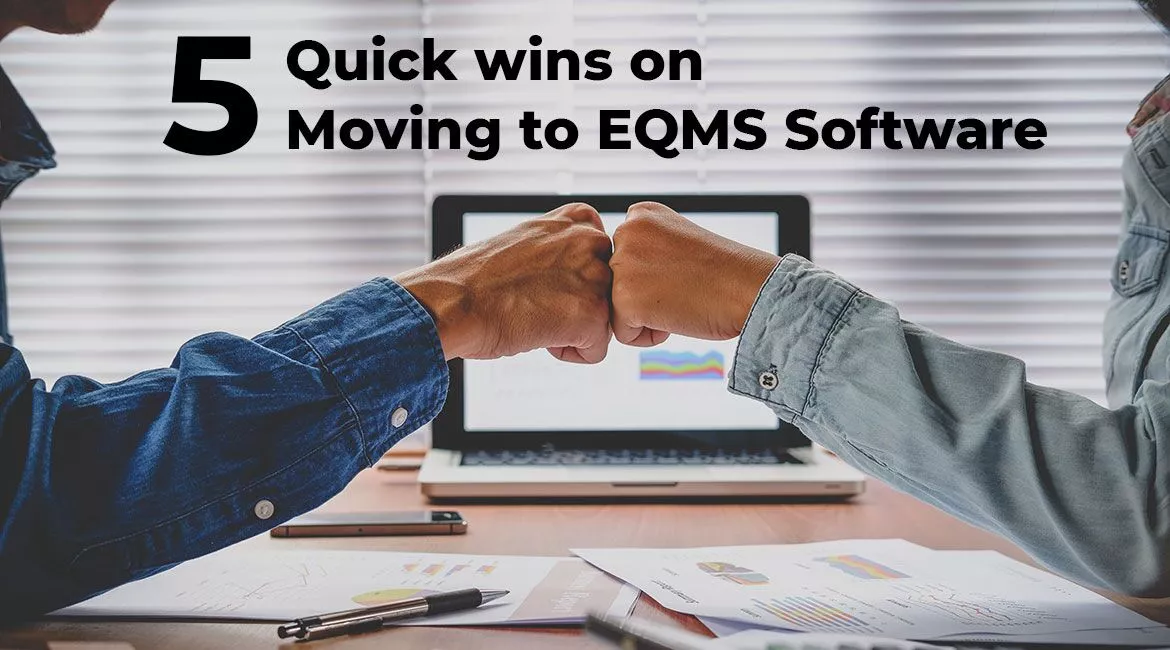| IN THIS ARTICLE |
|
1. Accountability 2. Time efficiency 3. One stop location for users 4. Security 5. Return on Investment |
1. Accountability
Automated software streamlines processes and assigns tasks to individuals, creating accountability and responsibility, which is particularly useful for auditing purposes.- All users are informed of tasks to be completed, and all tasks can be accessed from one place.
2. Time efficiency
At the end of each period, quality managers are tasked with collating information from the likes of management reports or centralised quality snapshots. They manipulate a range of spreadsheets to formulate meaningful data. It’s quite common for a quality manager to spend 3 days on this work. eQMS software significantly reduces this time spent on reporting vital information.
- Reduction in management time spent on manual processes.
- Senior management have immediate access to live data on complaints and product scrappage.
- Key problems and challenges within the business are quickly identified.
3. One stop location for users
Access to information can be a key obstacle in the efficient use of company data. eQMS software keeps all information in a central location.
- Users rarely know where all documents/spreadsheets are located in a manual system. eQMS software avoids this confusion.
- Searches in an eQMS are much more straightforward and successful.
- Rather than having, for example, one spreadsheet for Corrective and Preventative Action (CAPA) and another for supplier complaints, users of an eQMS have a central point for all information.
- When accessing an eQMS, users can be confident that they’re working from the latest version, or they will be told that they are viewing a previous version and there is a new version available.
- Some systems allow users to confirm their understand of document.
4. Security
Security is a major issue for all organisations. Within manual systems, information is traditionally kept in the possession of the quality manager who shares it only when they decide it is appropriate to do so. This can cause delays if they are not available, which can be particularly vexing when the information a user needs doesn’t actually require such a high level of security.
- The eQMS software gives quality managers flexibility to create levels of permission to access and/or edit documents, which saves time and inconvenience.
- Edit rights can be given with confidence, knowing how much information is being exposed at different levels.
- There is full traceability of changes to a record. The quality manager will know who made the change and when.
5. Return on investment
- A quality manager’s time previously spent on manipulating management reports can be spent creating other quality initiatives. This increases productivity, quality and therefore profitability.
- Users no longer waste time looking for up to date procedures relative to their job.
- Miscommunication that causes quality issues and faulty products is greatly reduced
- On average, the eQMS should pay for itself in 12 – 18 months.
